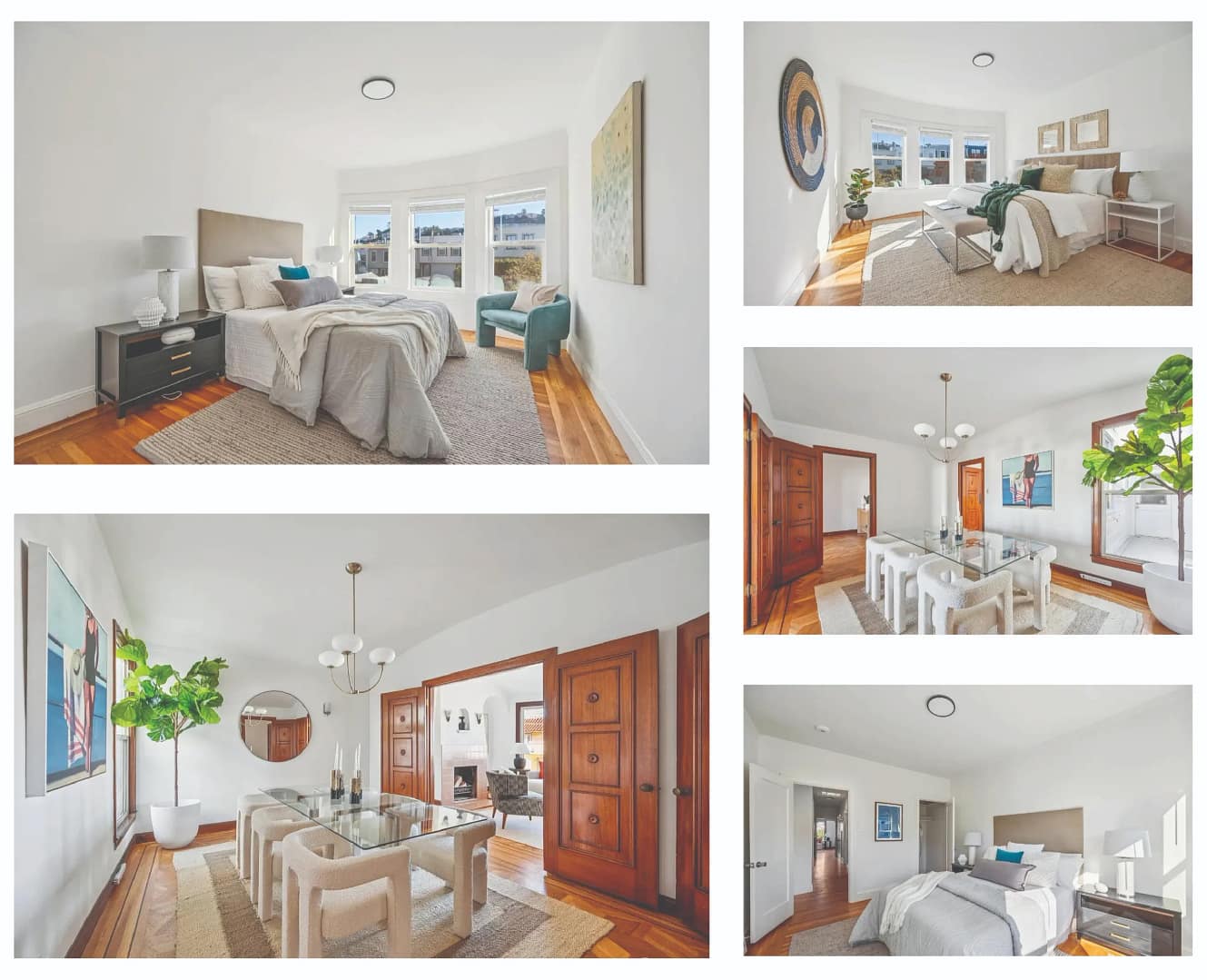We’ve all seen them, those perfectly lit, magazine-worthy listing photos that look almost too good to be true. Welcome to the world of AI staging, where a computer can turn an empty room into a designer showcase in minutes. It’s fast, efficient, and undeniably impressive. But here’s the truth: when buyers walk through the real home, the illusion often fades. The space feels smaller, colder, or simply “off.”
That’s where real-world staging still holds its ground in the San Francisco Bay Area; offering not just visual beauty, but emotional connection is important.
The Psychology of Touch…
Home buying is emotional, not analytical. As studies in Architectural Record and ICON confirm, sensory experience drives decision-making. When buyers can walk through a staged space, touch the textures, and see real light filtering through real fabric, their brains do something remarkable — they start imagining life there.
That spark of imagination turns curiosity into commitment.
It’s why homes that “feel lived in” — even temporarily — tend to sell faster and closer to asking price. As House Beautiful notes, the most effective staging doesn’t just decorate; it creates belonging.
What AI (Virtual) Staging Really Offers
Let’s be clear: AI staging has its place. It’s cost-effective, quick, and flexible. With a few clicks, agents can transform a vacant property into a styled showcase.
Reports from LCP Media show virtual staging can reduce costs by 90–97% compared to traditional staging. According to Styldod, turnaround is sometimes as little as 24–48 hours.
That’s ideal for investor listings, when budget is a real issue, or pre-marketing visuals. But as anyone who’s walked a virtually staged property knows, speed can’t replace substance. You can fake furniture, but you can’t fake feeling.

Real-World Staging: The Classic That Converts
Real-world staging is design you can feel. It highlights a home’s natural light, flow, and proportions while helping buyers envision themselves in the space. It’s how we turn “this looks nice online” into “we’re writing an offer tonight.”
Staging companies, like Sayde Mark Designs, are about more than just filling rooms. It’s about creating balance, energy, and emotion — that subtle moment when a buyer walks in and feels, this is home.
As Frank Lloyd Wright once said,
“The heart is the chief feature of a house.”
That’s what real design delivers: life you can sense, not just see.
Where AI Shines — and Where It Stops
AI staging is brilliant for early marketing or budget-conscious projects. It offers:
- Instant style updates (modern chic today, coastal tomorrow)
- Quick visuals for listings-in-progress
- Efficiency for multiple properties or remote marketing teams
But the line between aspiration and authenticity is thin. When expectations outpace reality, buyers feel misled — and that emotion lingers. Hometrack reports that disappointment after viewing AI-staged homes can even hurt an agent’s reputation.
“AI can make a space look beautiful, but real staging makes it believable and sellable.”
Blending Both Worlds
The smartest approach? Use each tool where it excels. Virtual staging can generate early interest. Physical staging closes the deal. The risk of financial loss from the feeling of being misled is real — when expectations don’t match reality, trust erodes, offers stall, and credibility takes a hit.
Based in San Francisco and serving the greater Bay Area, Sayde Mark Designs blends design expertise with proprietary software that enhances efficiency and adaptability — saving clients time and money. It’s technology used thoughtfully, in service of real design. Real furniture, real light, real texture — always styled with intention.
Technology Can’t Replace Taste
AI staging isn’t the enemy; it’s an evolution. But it lacks one thing that great design requires: human instinct.
As Elle Decor says,
“Design isn’t just what you see; it’s what you feel.”
And in real estate, feeling is everything. Algorithms can simulate beauty — but only human design creates connection. People don’t just fall in love with pictures, they fall in love with the feeling of home; this is the combination that helps to sell a home.
